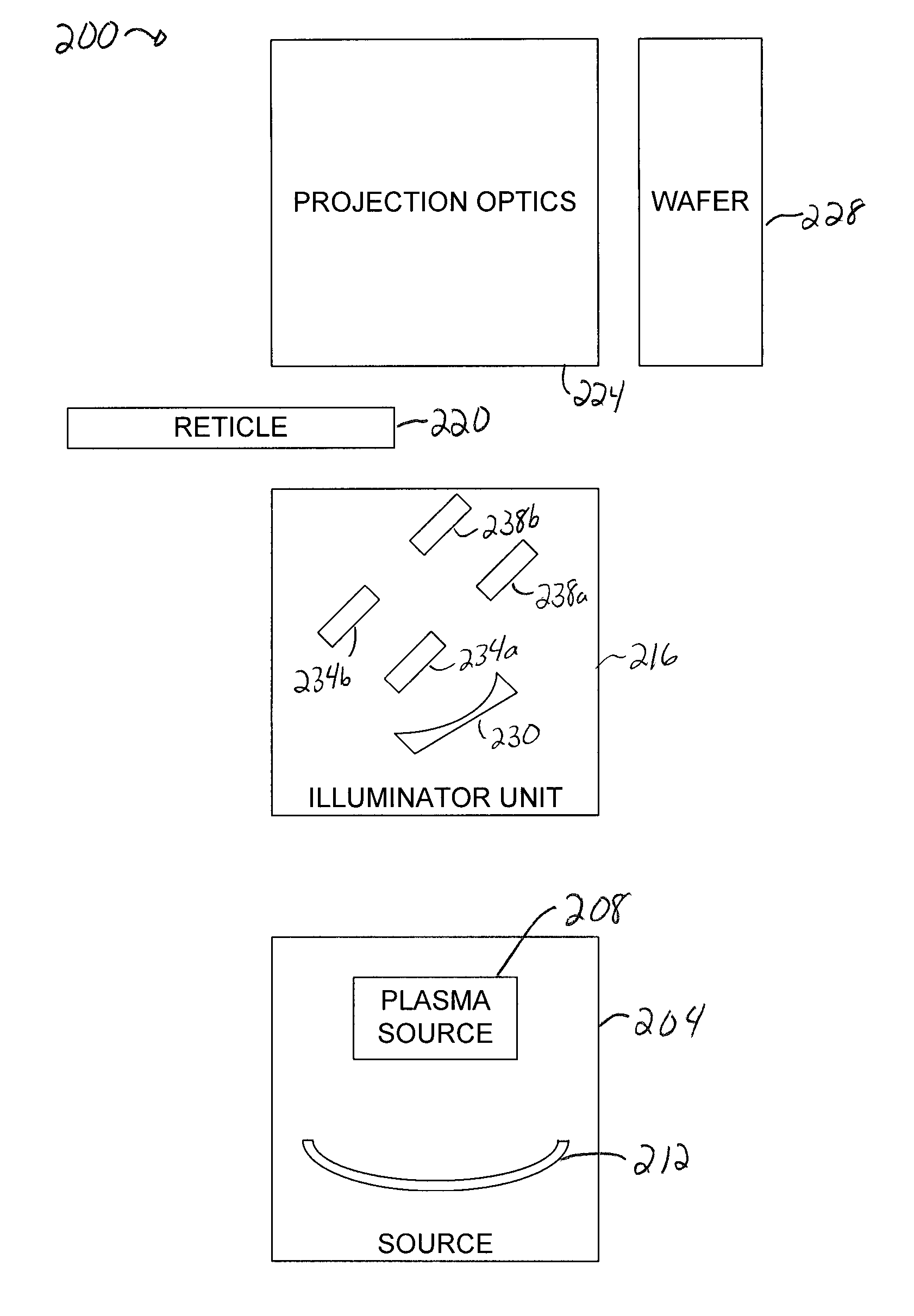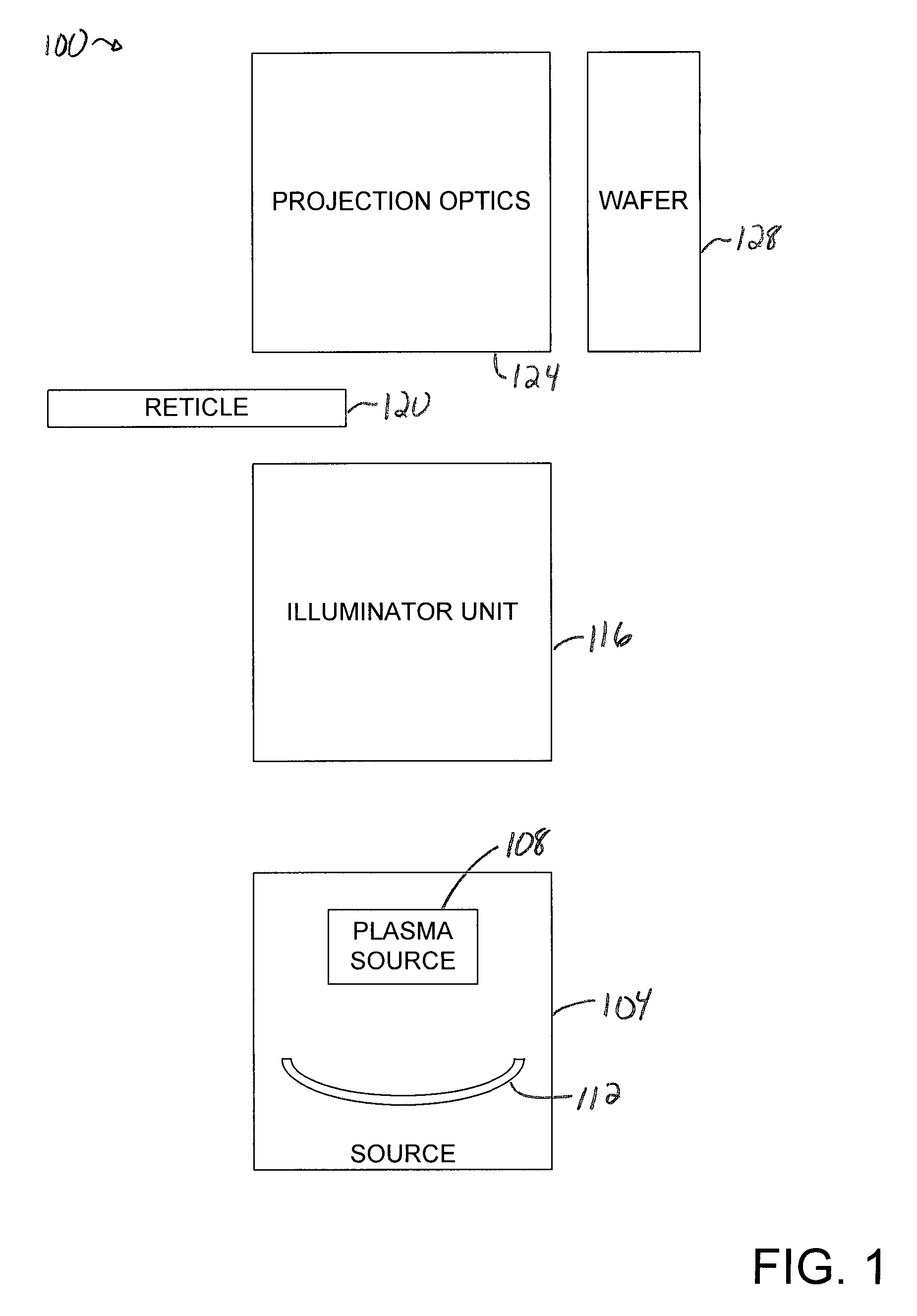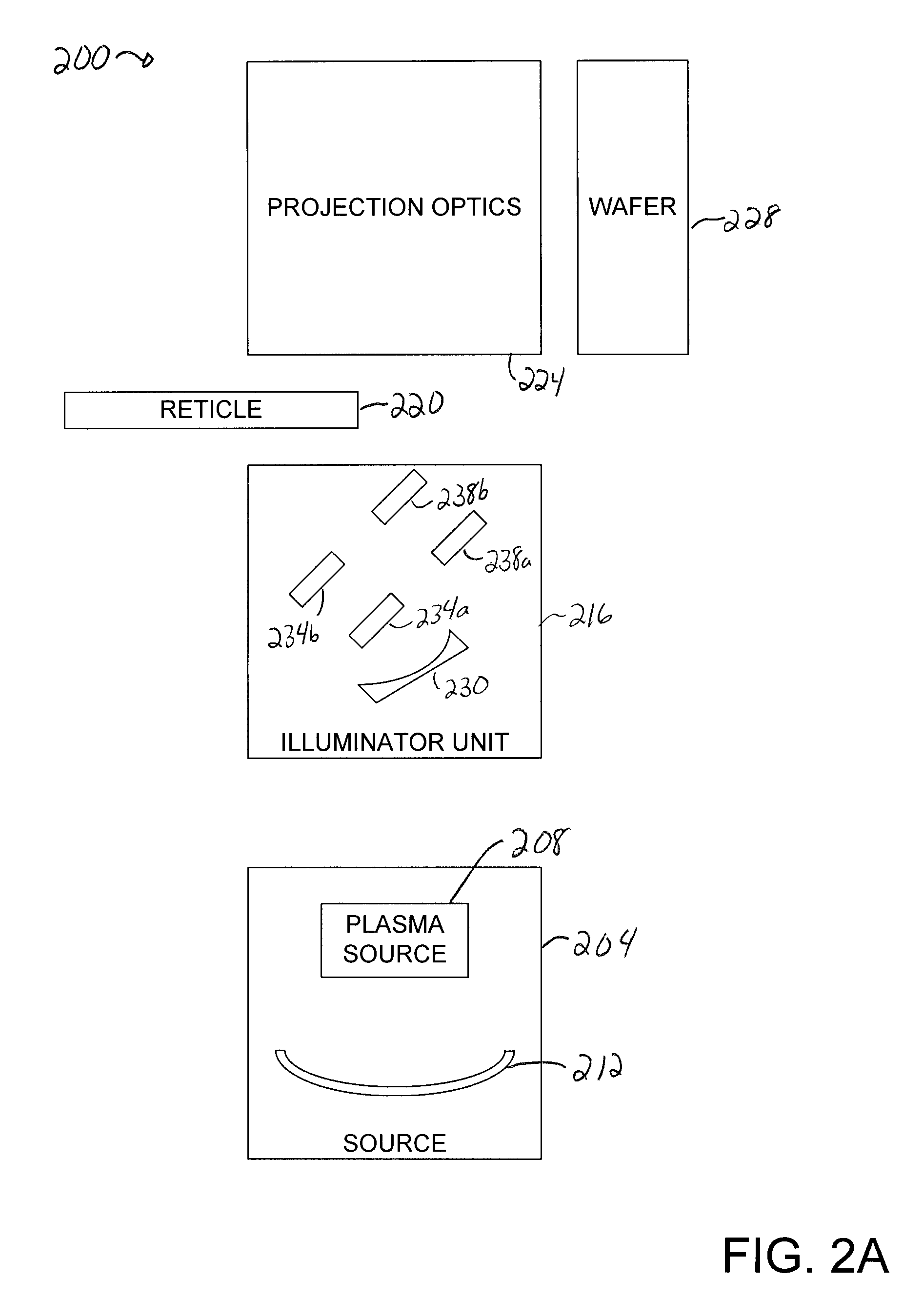Liquid Cooled Mirror for Use in Extreme Ultraviolet Lithography
a liquid-cooled mirror and ultraviolet lithography technology, applied in photomechanical equipment, instruments, nuclear engineering, etc., can solve the problems of degrading affecting the optical performance of the mirror, and often insufficient radiant cooling methods for cooling the mirror
- Summary
- Abstract
- Description
- Claims
- Application Information
AI Technical Summary
Benefits of technology
Problems solved by technology
Method used
Image
Examples
Embodiment Construction
[0042] For instances in which the heat load on a mirror is relatively high, radiant cooling methods are often inadequate for cooling mirrors that are a part of an extreme ultraviolet (EUV) lithography system. Internal or direct cooling methods involving the turbulent flow of fluid may be applied to mirrors to provide cooling in the presence of relatively high heat loads. Though turbulent flow provides for relatively efficient heat transfer and cooling, the use of turbulent flow often results in vibrations within a mirror. Vibrations in the mirror may be transmitted throughout a EUV lithography system, thereby compromising the accuracy of lithography processes.
[0043] An internally cooled mirror which utilizes a coolant or a cooling fluid that undergoes laminar or non-turbulent flow allows the mirror to be cooled substantially without vibrations being induced. Laminar flow is typically characterized by an organized flow field that has streamlines in which viscous stresses are more si...
PUM
 Login to View More
Login to View More Abstract
Description
Claims
Application Information
 Login to View More
Login to View More - R&D
- Intellectual Property
- Life Sciences
- Materials
- Tech Scout
- Unparalleled Data Quality
- Higher Quality Content
- 60% Fewer Hallucinations
Browse by: Latest US Patents, China's latest patents, Technical Efficacy Thesaurus, Application Domain, Technology Topic, Popular Technical Reports.
© 2025 PatSnap. All rights reserved.Legal|Privacy policy|Modern Slavery Act Transparency Statement|Sitemap|About US| Contact US: help@patsnap.com



